Explore West Bengal’s captivating jewellery heritage and unravel the intricate beauty of its adornments.
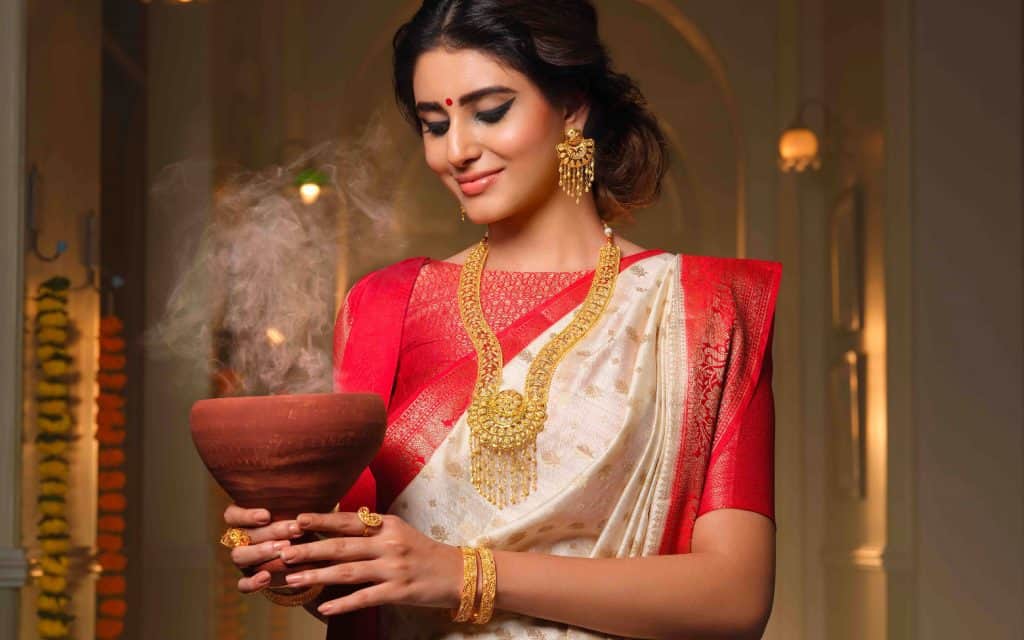
In the vibrant cultural tapestry of West Bengal, traditional jewellery stands out as a distinctive art form, embodying the region’s rich cultural heritage.
Located within the vibrant cultural mosaic of West Bengal, traditional jewellery emerges as an exquisite embodiment of the region’s profound heritage. Each piece of intricately crafted, traditional jewellery not only adorns but also narrates tales of bygone eras, echoing the essence of Bengal’s cultural diversity.
From the intricate designs of gold to the vibrant hues of precious stones, these adornments reflect the artistic prowess and craftsmanship honed over generations. Serving as more than mere accessories, they become cherished symbols of tradition, spirituality, and identity, weaving together the threads of West Bengal‘s illustrious past into a timeless tapestry of beauty and significance.
These ornaments are not merely accessories, they are artistic masterpieces deeply intertwined with the fabric of Bengali life.
Worn with pride and reverence, these ornaments play a pivotal role in the most honoured rituals and significant occasions – from the sacred bonds of marriage to the grandeur of bridal and groom attire, and the joyous celebrations of various functions.
As such, Bengali jewellery occupies a prominent position within the cultural legacy of the cultural ethos.
Handcrafted Bengali jewellery serves as a testament to the enduring traditions and exceptional artistry that have been inherited through time.
Here are some West Bengal Jewellery designs which mark traditional and historical references:
Tikli or Maang Tika
Tikli, a distinctive form of Indian jewellery, finds its traditional roots in the northern regions of India, notably in Rajasthan, West Bengal, and Gujarat. This ornamental piece, typically crafted as a pendant, graces the centre of the forehead, positioned just above the eyebrows.
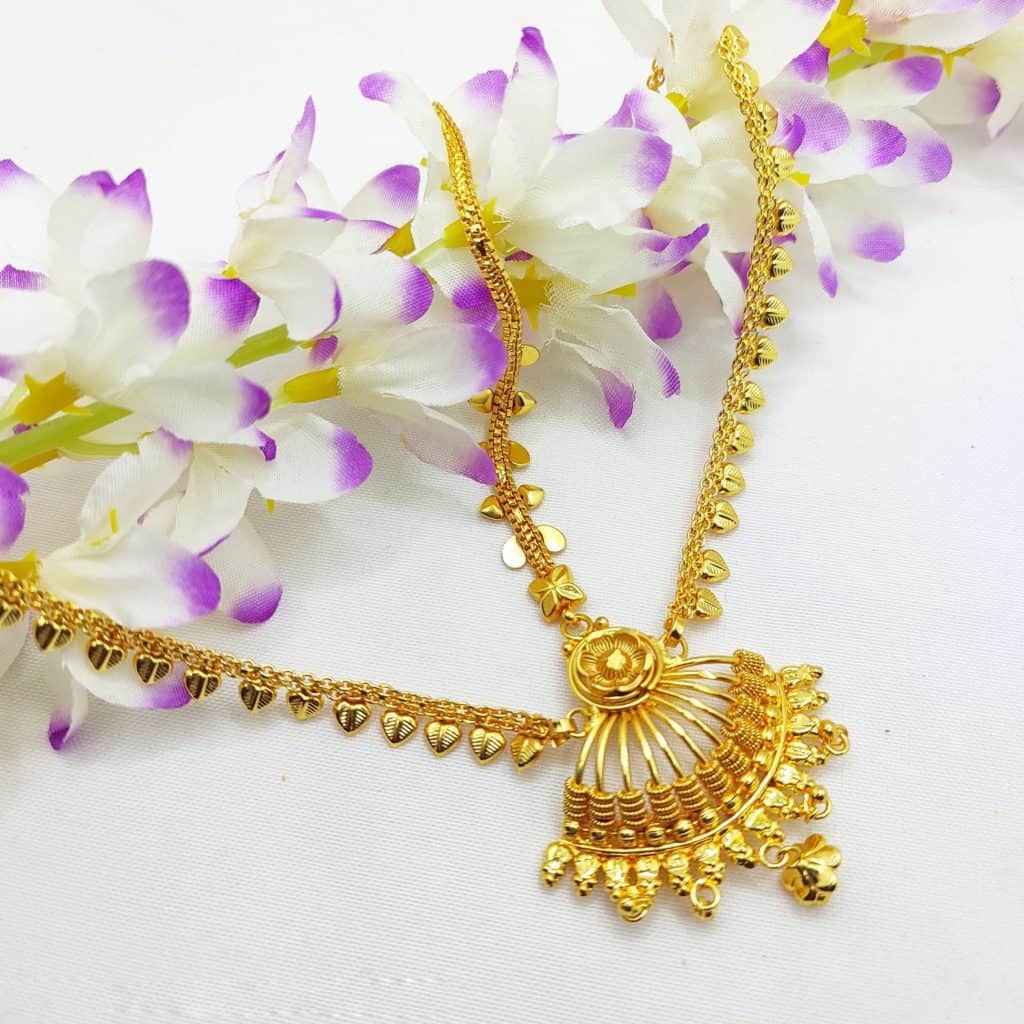
Crafted from materials like gold, silver, or other precious metals, Tikli showcases elaborate designs and intricate embellishments, including pearls, diamonds, and gemstones. Revered as a symbol of femininity, beauty, and grace, Tikli holds particular significance for brides, often adorning them on their wedding day as part of their bridal jewellery ensemble. Beyond weddings, Tikli embellishes other celebratory occasions such as festivals, religious ceremonies, and cultural events, adding an exquisite touch of charm and elegance to the wearer’s attire. More than a mere accessory, Tikli embodies India’s rich cultural heritage, symbolizing its vibrant history and cherished traditions.
Ratanchur
Gold Ratanchur, a cherished traditional Indian jewellery, has adorned women for centuries, particularly donned by brides on their wedding day across various regions of India, including Maharashtra, West Bengal, and Karnataka.
Derived from the Marathi language, “Ratanchur” combines “Ratan,” meaning “gems,” and “Chur,” signifying “bangles.” This jewellery ensemble comprises a necklace, earrings, and bangles, all meticulously crafted from gold and embellished with precious stones like diamonds, emeralds, and rubies. Inspired by nature’s motifs such as leaves, flowers, and birds, the intricate designs of Gold Ratanchur epitomize India’s rich cultural heritage, showcasing the remarkable craftsmanship passed down through generations.
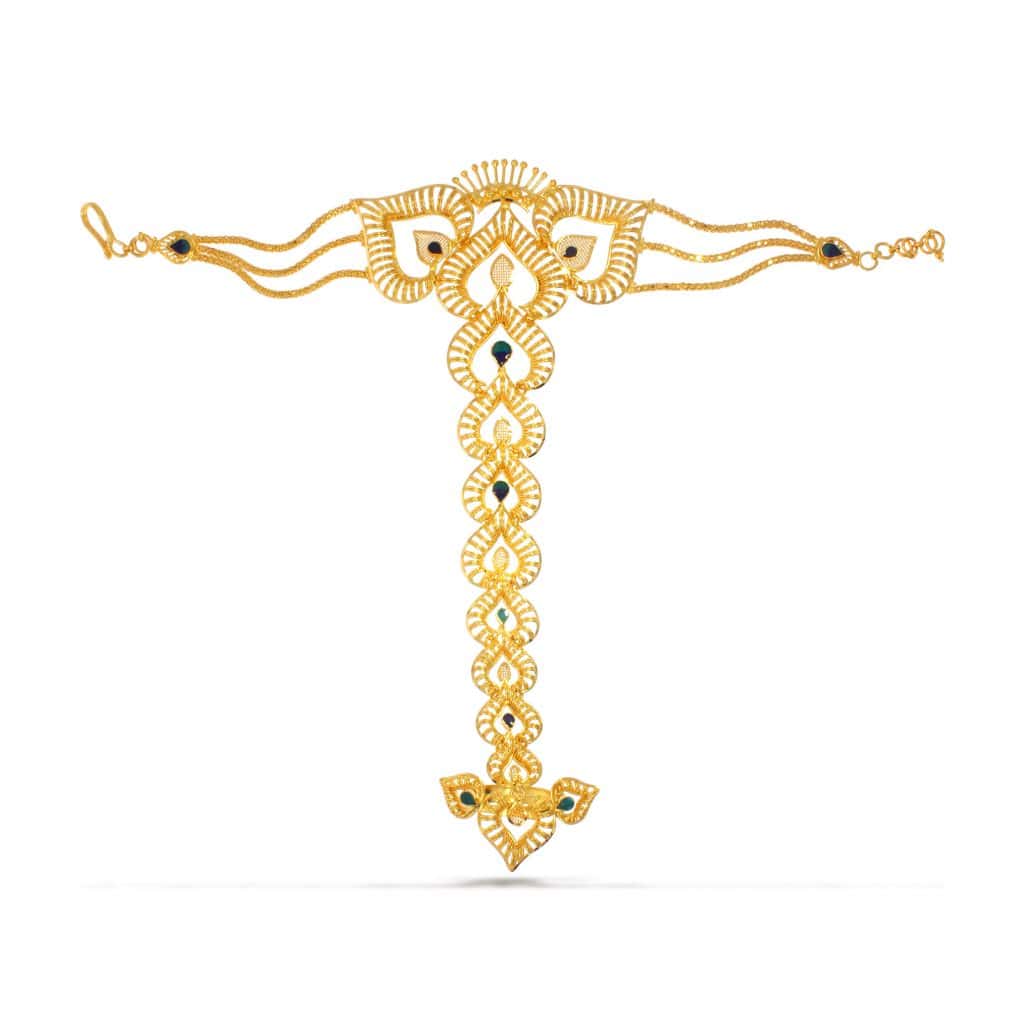
More than just adornments, Gold Ratanchur represents an integral facet of Indian wedding culture, essential to a bride’s wedding attire, serving as a timeless symbol of tradition and elegance.
Jhumko
Jhumko earrings are a type of traditional Indian jewellery known for their bell-shaped design. These earrings are loved by women across South Asia, especially in India, Pakistan, and Bangladesh.
The term “jhumko” comes from Hindi, where “jhumka” means “hanging earring”. They’re usually made of gold, silver, or other precious metals and are often decorated with intricate designs, pearls, beads, and gemstones.
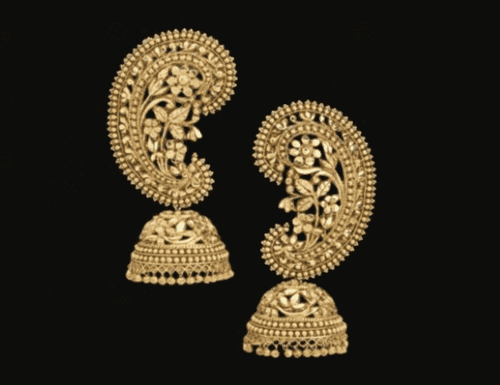
Jhumko earrings come in various sizes and styles, from small and simple to large and elaborate, suitable for different occasions and personal preferences. They’re versatile accessories, complementing both traditional ethnic wear and modern Western outfits, making them essential for every woman’s jewellery collection.
Beyond being mere accessories, jhumko jewellery holds cultural and traditional significance, reflecting the elegance and beauty of South Asian women.
Shaka Pola
Shaka Pola, a traditional bangle, is worn by married Bengali women in West Bengal, India. Typically crafted from red and white coral or sometimes conch shells, these bangles are worn in pairs, typically in odd numbers like three, five, or seven on each wrist.
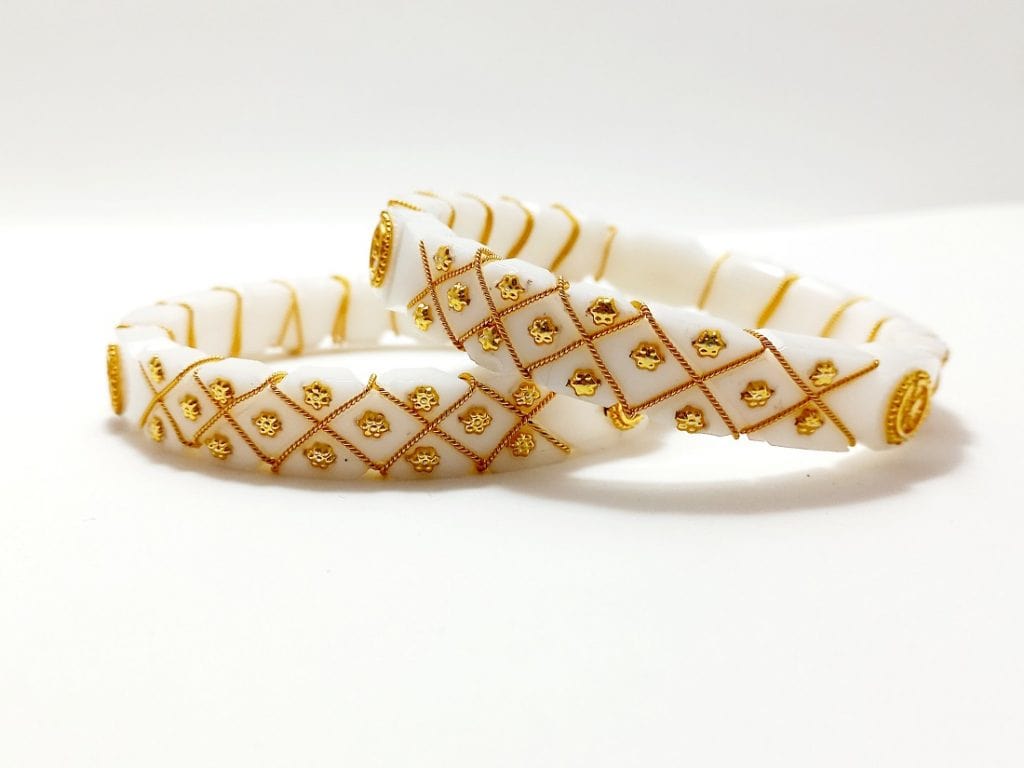
The red and white hues of Shaka Pola hold deep cultural and religious significance. Red symbolizes the strength of the goddess Durga, while white represents purity and peace. Believed to bring good fortune and ward off evil, these bangles are considered auspicious in Bengali culture.
Traditionally gifted by the mother-in-law to the bride on her wedding day, Shaka Pola signifies the bride’s new marital status. They’re also worn during religious festivals and family gatherings.
Crafting Shaka Pola demands skill and expertise. Coral or conch shells are meticulously selected, polished, and shaped, then adorned with intricate designs by skilled artisans using small hand tools.
Despite evolving fashion trends, Shaka Pola remains an iconic piece of Bengali jewellery, serving as a testament to the rich cultural heritage and traditions of West Bengal.
Saath Noli Haar
Saath Noli Haar, a cherished family heirloom, is a seven-layered gold necklace adorning the traditional Bengali bride.
Typically bestowed by her mother or mother-in-law, it derives its name from its seven layers of gold. Symbolizing intricate craftsmanship, it serves as an exquisite gift.
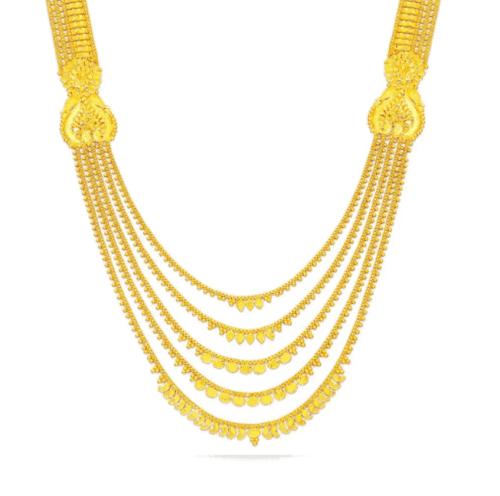
Alternatively, it’s also available in groups of five, known as Paanch Noli Haar, offering flexibility in design. Saath Noli Haar encapsulates Bengali tradition and elegance, representing not only familial heritage but also the cultural significance of weddings in Bengali society.
Beyond mere adornments, these jewels serve as cherished symbols, weaving together the threads of West Bengal’s illustrious past into a timeless narrative of beauty and significance.
Exploring this captivating heritage unveils not just the craftsmanship but also the stories and traditions that have shaped the region’s identity.
As we appreciate the beauty and intricacy of West Bengal’s jewellery, we also celebrate the resilience and creativity of its people, whose artistry continues to captivate and inspire.
Read more: Latest



